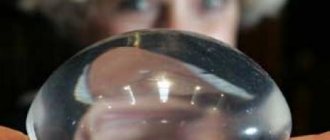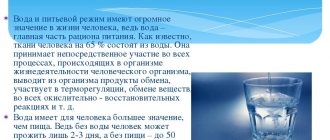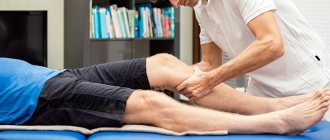The group of joint diseases includes pathologies and disorders of various etiologies, degrees of severity, which have different consequences and occur in patients of different age categories. However, these diseases are more or less similar in their symptoms - pain, swelling and limited mobility of the affected joint. Physical injuries, including sports injuries, metabolic disorders, age-related changes in the body are the main reasons that lead to the development of diseases belonging to this group. In the treatment of this kind of ailment, the method of plasmolifting of joints has demonstrated high efficiency, detailed information about which estet-portal.com will provide in this article.
Plasmolifting: treatment of like with like
The method as such has been used for quite some time. In cosmetology, for example, this is one of the most popular and effective anti-aging procedures; it is also prescribed for skin damage and irritation. Plasmolifting is successfully used in the treatment of joint diseases and in dentistry.
The fact is that autoplasmotherapy, an original technique created by our compatriot, is not widely known. The technology was developed by Moscow professor Renat Akhmerov, Doctor of Medical Sciences and a practicing physician with extensive experience. Today, plasma lifting is used in many clinics and cosmetology centers not only in Russia, but throughout the world.
Plasmolifting of joints is a method based on the human body’s ability to self-heal. Our body has amazing regenerative capabilities, but sometimes it needs help to start the recovery process.
The procedure involves the injection of plasma from the patient's own blood into the joint cavity. Plasma contains growth factors - biologically active substances that stimulate tissue repair processes, and do this locally, only where needed. Much the same thing happens with any injury: growth factors cause tissue to heal and regenerate. Cells at the site of injury are actively dividing, and very soon there is no trace left of the abrasion or scratch.
There are many indications for plasma lifting of joints. The procedure is recommended for almost all types of joint diseases and injuries. It will help with injuries, arthritis and arthrosis of I and II degrees, deforming arthritis and arthrosis, bursitis, myofascial syndrome, coxarthrosis, tendinitis, osteochondrosis and heel spur.
A significant advantage of plasmolifting over other joint treatment methods is the small number of contraindications. Plasma from your own blood is absolutely compatible with the human body; it does not cause allergic reactions or side effects, addiction or intolerance. The only contraindications for the procedure are acute infectious diseases, blood diseases and malignant neoplasms.
The doctor takes blood from a vein from the patient - from 10 to 50 ml. This is a very small amount, and it does not affect the patient's condition in any way. The blood is then placed in a centrifuge where the plasma is separated from the blood.
The area of the joint where the injection is to be given is wiped with a disinfectant solution, and using a regular needle, the plasma is injected directly into the joint. If desired, the doctor can use local anesthesia, although most patients claim that plasma lifting, for example of the knee joint, is a painless procedure.
Despite the fact that improvement occurs after the first procedure, it is recommended to undergo plasma lifting over a course. Depending on the severity of the problem, 5–7 injections are required. The interval between injections should be at least 3-5 days.
The effect appears very quickly. Within half an hour after the injection of plasma, the pain subsides, after a while the patient notices that the joint has become much more mobile. But the most striking changes appear after completing a course of 3-5 injections, that is, after about 2-3 months - the joint is restored, the pain completely subsides, the inflammation goes away, mobility is restored, and joint fluid begins to be produced in the required volume again. Completing a course of plasma lifting in a timely manner sometimes allows one to avoid surgical intervention.
Patient reviews of joint plasma lifting are the most positive:
Before deciding on plasma lifting of joints, you need to familiarize yourself with all the advantages and disadvantages of this technique.
- No side effects.
- Zero risk of allergies or intolerances - your own blood plasma is completely biocompatible with the human body.
- Reducing the drug burden on the body. A course of plasma lifting allows you to reduce the dosage of medications, and in some cases, completely abandon some medications.
- A wide range of diseases and injuries for which the procedure is effective.
- Getting rid of the causes, not the symptoms.
- Effective tissue restoration, relief of inflammation.
- A small list of contraindications.
- There is no rehabilitation period - immediately after the procedure you can return to your normal life.
- Compatibility with other therapeutic methods.
- The need for injections.
- Price. Plasmolifting is an affordable procedure, but still not free.
The price of one plasma lifting procedure in Moscow clinics ranges from 3,500 to 6,000 rubles. The cost depends on the reputation of the clinic and its level, as well as on the experience of the doctor. Add to this the price of examination before autoplasma therapy, since not a single conscientious doctor will prescribe a procedure without having information about the patient’s health condition.
However, the price of plasma lifting can be reduced if you pay for the entire course at once - in this case, many private clinics offer favorable discounts.
Indications and contraindications for plasmolifting of joints
Indications for plasma lifting of joints are various diseases of these body structures of a wide variety of etiologies:
- injuries;
- arthritis I and II degrees;
- arthrosis I and II degrees;
- bursitis;
- tendinitis;
- osteochondrosis;
- muscle spasms;
- bone tissue atrophy;
- meniscal diseases;
- coxarthrosis;
- plantar fasciitis, etc.
As for the contraindications applicable to this method of treatment, due to the absolute compatibility of PRP with the body, there are only a few of them:
- infections in the acute stage;
- malignant neoplasms;
- blood diseases.
Thus, the vast majority of patients have no contraindications to plasma lifting, which is an undeniable advantage of the procedure.
The essence of the method
Plasmolifting of the spine promotes the regeneration of its tissues. Thanks to this procedure, it is possible to cope with various pathologies and problems in the functioning of the musculoskeletal system.
Treatment of the spine using plasma lifting is based on the therapeutic properties of blood. It supplies the body cells with nutrients and oxygen. Blood elements dissolved in liquid plasma perform various important functions - in particular, thermoregulatory and protective.
To obtain those very useful components, blood should be taken from the patient. During the centrifugation process, plasma is separated from it. The next stage is when the person is given an injection in the area of the pathological focus. The injection stimulates tissue repair.
Note that such lifting is successfully used in the field of aesthetic cosmetology. After all, it has not only a healing, but also a rejuvenating effect.
How does plasma lifting work?
Platelets are the formed elements of blood that the body needs to restore the integrity of blood vessels and stop bleeding. Another important function of platelets is the ability to enhance tissue regeneration. These blood components migrate to damaged areas and release growth factors. As a result, increased cell division is observed, leading to gradual tissue healing. Unfortunately, the natural migration of platelets into an inflamed joint may be limited, but targeted injections offer the opportunity to overcome this barrier.
Positive effects of the method:
- Increasing the rate of healing of articular components.
- Relief of pain.
- Restoring mobility of the musculoskeletal system.
- Elimination of the inflammatory process.
- Improving blood microcirculation.
To achieve an optimal therapeutic effect, it is necessary to introduce as many platelets as possible into the joint cavity. The first step in preparing for the procedure is to obtain the patient's blood. After this, the specialist cleans the blood from red blood cells and white blood cells. At the end, the liquid is saturated with platelets. Despite the change in the quantitative composition of the plasma, the resulting liquid is still biologically compatible with the patient's tissues.
Plasmolifting effect
The body is prone to renewal, but over time it slows down. As a result, diseases arise.
The processes of development of osteochondrosis and other pathologies of the spine are described in various articles and discussed in numerous videos. However, diagnosing yourself over the Internet is not recommended. If any symptoms appear, consultation with a doctor is required.
The progression of the disease can be prevented if the correct treatment method is chosen. The use of autoplasma can effectively strengthen bone tissue.
Plasmolifting for hernia and other pathologies of the lumbar, thoracic or cervical spine is one of the promising treatment methods. This procedure restores the surface of the damaged vertebra, relieves spasms, and relieves the person of pain.
Injections restore shock-absorbing function, flexibility, and mobility to the spine. Its tissues receive moisture and nutrients, as a result of which the patient begins to feel much better.
Indications for the procedure
A common disease of the spine is osteochondrosis (cervical, thoracic, lumbosacral). This is the main indication. However, treatment of a person with such a pathology should be prescribed and monitored by qualified specialists.
Plasma therapy is used not only for osteochondrosis, but also for other diseases of the spinal column. Other indications include:
- arthrosis, arthritis;
- traumatic injuries;
- muscle spasms;
- intervertebral hernia.
This procedure can also be performed for recovery after surgery. It also helps well with scoliosis.
Plasma injections can be combined with other therapies to make the treatment even more effective. An experienced doctor will help you select a suitable spinal column restoration program.
Technique
Plasma extracted from the blood restores damaged bone tissue. True, the success of the procedure largely depends on the professionalism and experience of the doctors who perform it.
Plasmolifting is carried out in several stages. Let's take a closer look at each of them.
To determine the severity of the pathology, before therapeutic plasma lifting of the spine, you should undergo a comprehensive examination. Among the main preparatory procedures are:
- tomography (needed to assess the condition of each vertebra);
- taking blood tests.
A few days before plasma lifting, you will need to stop drinking alcohol, sweet and fatty foods. It is not recommended to smoke before performing this procedure.
Plasma therapy is usually carried out in the first half of the day. It's better to do this in the morning. You can eat a few hours before the procedure, but breakfast should be light. You should opt for foods that contain large amounts of vitamins.
Your doctor may advise you not to use certain medications. Therefore, be sure to tell your doctor if you are taking any medications.
First, the specialist takes venous blood - up to 50 ml. This amount is so insignificant that even a hungry patient will not feel severe weakness after such a procedure.
The tube is then placed in the prepared centrifuge. Under the influence of centrifugal force, plasma begins to separate.
After the process is completed, the blood is divided into two parts. The lower one is almost black, dark red. The top one remains transparent. Plasma has no color.
Using a syringe with a thin needle, the doctor draws up the separated liquid and injects it into the affected tissue. The spine will become healthier after just one injection, but about 5-8 procedures are required to achieve maximum effect.
The recommended interval between injections is several days. This should be enough for the tissue to heal after using the needle. In the meantime, the plasma will have time to start regenerating processes.
For arthritis and arthrosis, single therapy will not be enough. It is recommended to repeat the course once or twice a year.
The number of injections and frequency of procedures is determined by the doctor. The specialist takes into account the severity of the disease, as well as the individual characteristics of the patient’s body.
Preparation and carrying out the procedure
The procedure requires isolating plasma from the blood.
Preparing the patient for the procedure includes mandatory blood tests - general, biochemistry, to detect various infections. The day before the expected blood collection for plasma lifting, it is recommended to exclude salty, spicy, fatty and fried foods from the diet. When there are 4 hours left before the start of the procedure, a complete refusal to eat is required, at the same time drinking clean water is not limited.
Plasmolifting is a procedure performed on an outpatient basis. The process of processing the collected blood in a centrifuge takes about 20 minutes. After this, the doctor injects platelet-rich plasma into the paravertebral zone of the pathological focus. To relieve pain, skin anesthesia is administered at the site of the intended injection. The total duration of the event, including the process of collecting and processing blood, is about an hour. At the end, the patient needs to lie quietly on the couch for 5-7 minutes. A lasting positive effect is ensured by repeating the procedure 5-7 times once a week. The achieved result lasts for several months, after which the course of treatment must be repeated.
Contraindications and complications
Since a person’s own plasma is a material that can be combined with all his tissues and organs, such treatment is considered safe. However, there are some contraindications:
- lactation;
- pregnancy;
- infectious diseases;
- mental problems;
- blood diseases;
- malignant tumors.
If a doctor does not properly handle instruments, there is a risk of infection with a blood-borne virus. For this reason, patient vigilance and the reputation of the clinic are very important.
Reviews
Plasmolifting is a method of healing the spine, which has deservedly gained great popularity. People who have undergone this procedure note that it is painless, does not require hospitalization and is carried out quite quickly (all stages usually take about an hour). Patients also like that it does not require long and careful preparation.
People often report noticeable positive effects from this treatment. Negative reviews are most often left if you are not satisfied with the quality of the specialist’s work.
And finally
If you do not want to harm yourself, you should consult with an experienced doctor before performing plasma lifting. This treatment method allows you to achieve very good results, but you should not forget about the contraindications to its use.
We must also remember that complex therapy is usually prescribed to enhance the effect. Plasma therapy alone will not be enough.
To avoid complications, take your choice of clinic with the utmost seriousness. You should only contact reliable specialists who have won the trust of patients.
Many people of the middle and older generation know from their own bitter experience what joint disease is. These are constant pain, the inability to move normally, do favorite things and live fully. Fortunately, medical technology does not stand still; scientists are constantly inventing new methods of therapy. One of them is plasma lifting of joints. We will tell you about the features of this procedure, indications and contraindications for it, as well as how much this service costs.
How is the joint plasmolifting procedure performed: description of the process
The joint plasmolifting procedure, in other words, is an injection of the patient’s previously prepared blood plasma, enriched with platelets, into the target area.
To prepare the material, the doctor takes 10–50 ml of blood from a vein. The blood is then subjected to a centrifugation process, which results in the separation of plasma from the blood.
The finished drug is injected into the joint using a needle and syringe. Despite the painlessness of the injection, some patients ask the doctor to use local anesthesia to ensure absolute comfort during the treatment.











